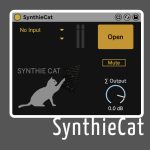The year 2021 is coming to a close (thank goodness). I thought we could take the time to look back at the video tutorials most watched on Sonic Bloom. Have a look if you’d missed them before and I hope they’ll provide you with some fresh ideas. And if you have any Ableton related topics you’d like me to cover in future tutorials, leave me a comment below. It’s always good to get suggestions on what you’d want to see.
So, let’s get started… the top four positions are all taken by my mini series about the new Max for Live Packs that were released for free with Live 11. They’re all part of the wider series With a Little Help from Max for Live.
1 Inspired by Nature – Emit & Tree Tone
This is the third video for the Inspired by Nature Pack by Dillon Bastan, but probably made first position since the devices are less self explanatory than the others, and you can end up puzzled with no sound coming out. Emit makes use of particles shooting across a spectrogram to show the grain of the played sample. Vertical movements denote filtering and panning in the visual granular synthesiser. Tree Tone, is quite different from the other devices in the pack. Instead of particles it works with fractal patterns of plants, that lets you grow trees. Each branch represents a resonator with different frequency, decay and amplitude values.
2 Inspired by Nature – Vector FM & Bouncy Notes
Part two looks at two more devices from Inspired by Nature. The first one is Vector FM. The Max for Live FM synthesiser uses a particle system, where each particle represents an Operator oscillator or pair. Bouncy Notes is a Max for Live MIDI effect that uses gravity features with balls dropped and bounced on a piano roll for each sounded MIDI note. This allows for very creative patterns and melodies. In the video tutorial we’re looking at both devices features and what we can do with them musically.
3 Inspired by Nature – Vector Grain & Vector Delay
This tutorial is part one for Inspired by Nature. In it, I show you the granular looper Vector Grain, a Max for Live MIDI instrument, and Vector Delay, a multitap delay Max for Live audio effect. Both employ a particle system in with each particle is a visual representation of an individual voice or delay line. They’re both great fun to use and I explain all the features so you know how to get the most out of them.
4 PitchLoop89
PitchLoop89, a collaboration with Robert Henke, was inspired by an early digital effects processor – the Publison DHM 89. Essentially it’s a stereo pitch shifting delay. To achieve the pitch shifting it employs the same method as tape. One head for recording and two moving heads for playback. I love how many sounds you can create with it. Glitch effects, shimmering delays and even vibrato. The video tutorial shows you all the features and gives you a glimpse of the vast possibilities PitchLoop89 offers.
And last, but certainly not least, we have an Ableton Live Quick Tip.
5 Revert to Live 10 Order of Audio Effects in Live 11
In Live 11 the default order of the audio effects in the browser was changed. Instead of folders by effect name, you’d now see top folders of the effect type first, with subfolders by effect name. While this change can be useful for beginners, it creates an extra workflow step when you’re trying to access an audio effect preset. Luckily, they listened to us beta users and gave us the option to revert back to the order by effect name. This tutorial shows you how you can switch between these two options.


















